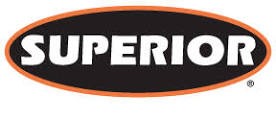Overview
Superior Industries Inc., is a U.S. based manufacturer and global supplier of bulk material processing and handling systems.
The Challenge
Superior Industries, Inc produces heavy equipment and conveyor systems for mining and material processing. This equipment is large, complex, and requires exacting production standards for delivery to the company’s global customer base.
Production quality was tracked via paper-based checklists maintained on clipboards and notebooks. Production QA workers were not incented to be diligent with their information recording – because they knew most of their notes were stored in file cabinets, and were never reviewed or utilized by internal teams or the customer.
Because their work was rarely reviewed or even accessed, there was not a strong culture of engagement with the QA function by the team.
Solution
Leveraging the Checklist product by IOLITE Solutions, Superior was able to design checklists for each assembly line and assembly area. Custom questions, answers, and actions were defined by each assembly line supervisor – giving each production area complete control over how they designed their own inspection protocols.
Checklist features allowed QA team members to document their inspection with data input, with tasks which could trigger work for others who might need to correct a non-standard result, and photos to document that assemblies were properly installed prior to leaving the factory.
Checklist answers could be set up as text or numeric data input, or even in matrix format – where a QA reading such as temperature tests over time could be recorded (and acted upon if necessary) in real time.
Result
By empowering the QA teams to create their own Checklists, the culture of the QA team changed. They took ownership of their inspections, knowing that the data they were collecting had meaning, and was being acted upon to make their product better – in real time. Documentation such as testing results, and assembly photos were printed via .pdf, and included with the delivery to the customer – thus providing the customer a view of the care in which their product was manufactured.

